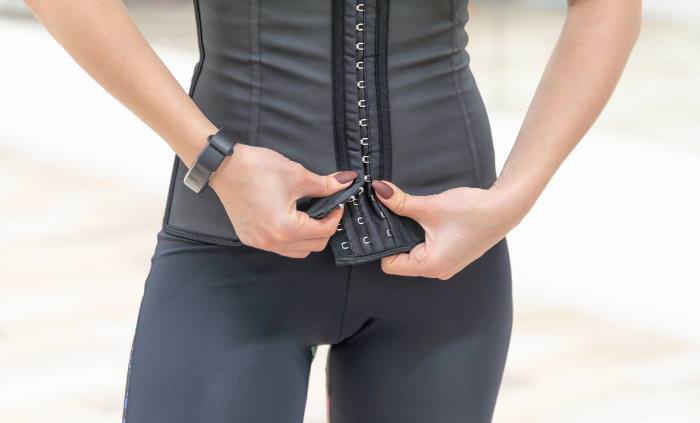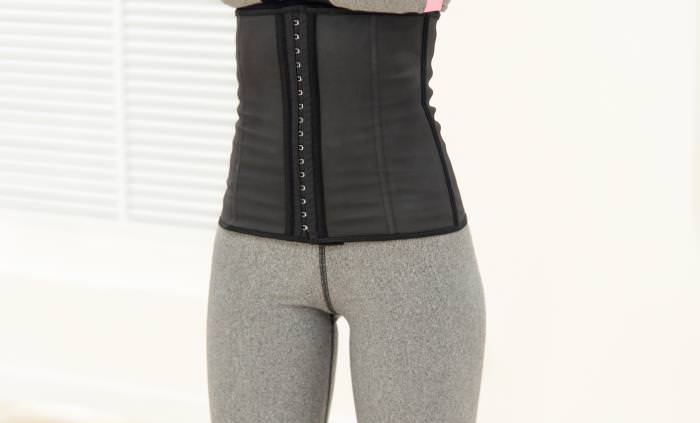

Waist trainers, in a way, are the modern corset. Like corsets, they're a garment made of thick fabric, to be tightly worn around the waist. They're clasped shut with either hooks, lacings, or Velcro. Like corsets, they may contain metal or plastic boning, to keep their shape. If it sounds like a corset, and it looks like one too, maybe it is! Except, unlike traditional corsets, modern waist trainers claim to have the ability to train your ab and core muscles to remain tight for good, thus affecting your shape.
Waist trainers, more than shapewear, aim to "train" your waist and cinch it to a thinner circumference, only given that you wear it over prolonged periods. We'll tell you right off the bat- they simply don't do that. What do they do though? And could there possibly be even the slightest benefit in wearing them? Let's close in tighter around the facts.

The cinching effect does happen, don't get us wrong. But that is only temporary, since wearing shaping garments doesn't affect body mass. If you're looking to appear slimmer or more put together for a specific event, a waist trainer will do the job, although shapewear might be more comfortable as it lacks the boning and is made of a more flexible material.
Wearing either won't help you lose weight. If you eat while wearing one you might eat less because of the pressure it puts on the stomach, though that doesn't sound too appealing. We wouldn't recommend doing that, as eating, even when trying to lose weight, must be enjoyable.
There is one benefit we can back up. A waist trainer, like a corset, can help you with posture issues. It can help support your core and spine, thus temporarily increasing mobility.
Additionally, wearing a waist trainer post-partum, for a limited period, can help with pain and bleeding.

Wearing a waist trainer sporadically is 100% harmless. But if you're only taking it off to sleep, do keep in mind that it's not only your waist being cinched- it's everything beneath it too. This can put stress on your internal organs, challenge your breathing, cause heartburn and ultimately, risk your posture.
Squeezing your lungs means your blood isn't as saturated in oxygen as it can be, leading to fatigue. And while we did mention how a waist trainer could have positive benefits to one's posture, wearing it consistently will eventually wreck your posture as it in fact weakens your core muscles; when they're constantly supported, they don't have to put in the work to support your body weight themselves.
Now that we know all that, it's only logical that health experts don't recommend wearing it while working out. The decreased blood flow, the unnatural temporary location of internal organs, and overall discomfort won't bring you many positive results.
If you're looking for a long-lasting slimmer shape, there is no easy formula. Only a healthier lifestyle will do. You can check out these Good Dietary Habits For a Healthy, Lean Body After 50
And remember the rule of thumb: eating fat won't make you gain weight as eating sugar will. Sugar isn't demonized in the media in vain. And if we're busting myths, here's another one for you: spot exercises like crunches and sit-ups won't shrink your waist, no matter how persevering you are about them. If it's diligence you're after, go for the bigger moves like squats, lunges, push-ups, and shoulder presses. Medical News Today recommends to "focus on both cardiovascular activities, such as running or walking and strength training, such as lifting weights."
For core, ab, and posture workout, check out this video for beginners:
And this video for something a bit more challenging:And finally, remember that not every person has a natural hourglass shape. Even young models without an ounce of excess weight might have a boxy or square shape to their body- it's simply genetics, and it's time we embrace those differences.
We would like to finish by stressing that nothing in this article is relevant to medical corsets, which look something like this, and are prescribed by doctors:
